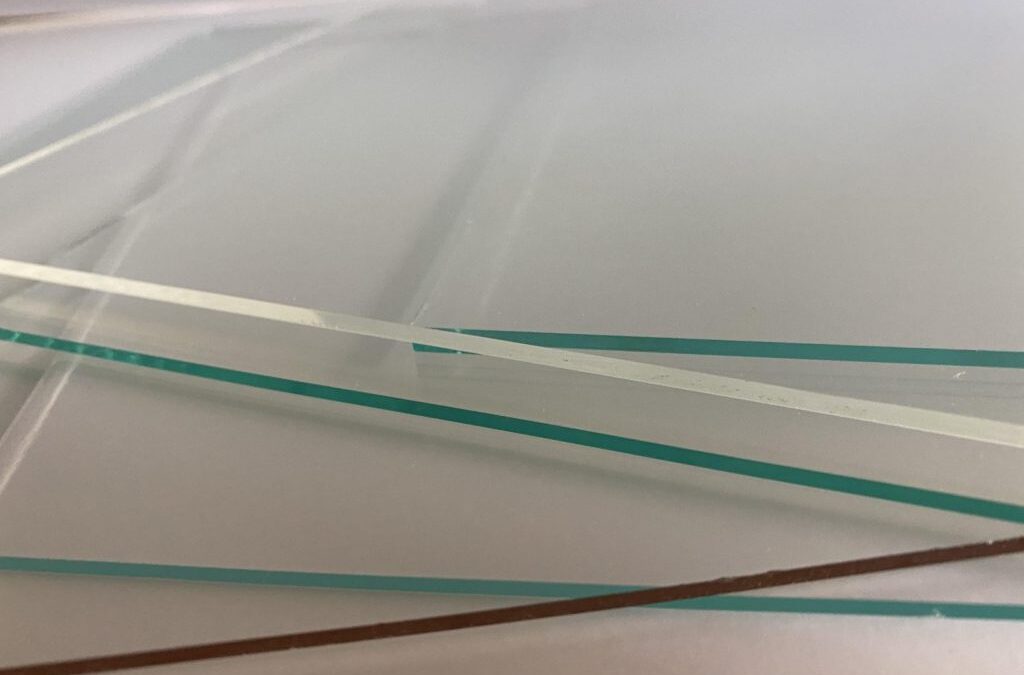With the variety of glazing options now available in the industry, selecting the right glazing can be a daunting task. There are many options available with some UV protective properties as well as standard glass with none. A custom picture frame should not only be created with aesthetics in mind but also protect your artwork while on view.
Here are a few questions to initially consider when reviewing glazing options for a frame:
Where will the piece be installed?
What are the lighting conditions?
What is the medium of the artwork?
Does it contain pastel, charcoal, or other friable elements?
Once completed, will be piece be transported, or shipped?
Given the nominal additional cost involved to provide the highest level of UV protection available in the industry, the following is a breakdown of attributes and considerations for the preferred glazing options available.
Optium Museum Acrylic
The preferred glazing of museums and collectors. Versatile, and provides optimal viewing, it can be seamed for oversize pieces. With its shatter resistance, anti-static, and abrasion-resistant properties, it is the ideal choice for works on loan, in public view, or items that may be transported.
Anti-Reflective -virtually eliminates reflection in the most lighting conditions
Blocks up to 99% UV rays-helps deter fading
Anti-static surface-ideal for works that have friable media
Abrasion resistant-surface is protected against scratches
Shatter resistant-acrylic substrate that is resistant to impact and ideal for handling and transport
Museum Glass
Its anti-reflective properties provide optimal viewing for smaller works at a lower price point than Optium.
Anti-Reflective-virtually eliminates reflection in the most lighting conditions.
Blocks up to 99% UV rays-helps deter fading
Considerations- When light is reflected, there is a slight cast color. Not available in oversized dimensions. The glass is sensitive to impact.
Conservation Reflection Control Glass
The surface has a matte finish which softly diffuses reflected light.
Non-Glare-has a matte finish that softens reflection
Blocks up to 99% UV rays-helps deter fading
Considerations-The matte finish tends to soften the image it is covering. Should not be used for depths over .25”. Museum Glass is often the preferred choice when viewed side-by-side when reflection and clarity is a concern. The glass is sensitive to impact.
Conservation Clear Glass
This option looks like regular, clear glass.
Blocks up to 99% UV rays-helps deter fading
Considerations-Has a glare that you expect to see with traditional glass. The glass is sensitive to impact.
Conservation Clear Acrylic
This option looks like regular, clear glass or acrylic.
Blocks up to 99% UV rays-helps deter fading
Shatter resistant-acrylic substrate that is resistant to impact and ideal for handling and transport
Considerations-Has a glare that you expect to see with traditional acrylic, plexiglas, or glass. The acrylic surface can abrade and scratch over time. Due to inherent static charge, should not be used with friable media.
Selecting the right glazing is as important as choosing the right frame and mat for your artwork. When meeting with your custom framing specialist, review samples in various lighting conditions, and discuss the potential considerations to determine which is the best fit for the project.
If you have any questions about UV filtering glass, or replacement custom picture framing glass, please contact us at
(773) 871-9900 or [email protected]

